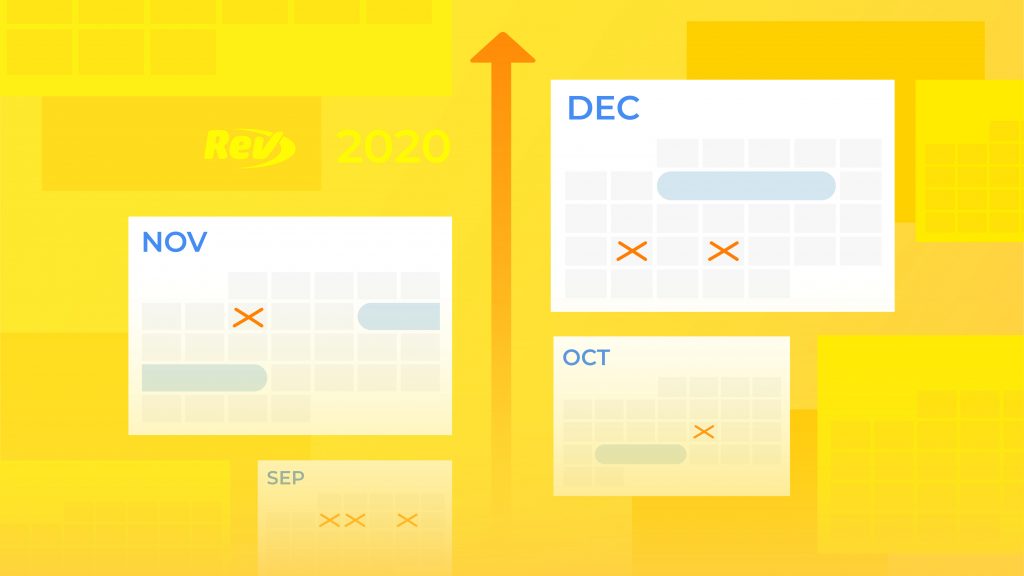The “Let’s Just Say 2021 Has Already Started Now” Rev AI 2020 Roundup
The Rev AI team made great strides with our speech recognition engine in 2020. Let's take a look at some of our achievements.

As we look to toss 2020 into the nearest active volcano, we’re taking some time to reflect. We’re ready to call it a new year, sip some champagne, and just… move on into 2021.
It’s safe to say that 2020 was an unusually difficult year for everybody on this planet. And because we fancy ourselves a member of this planet, we were no exception to 2020’s challenges. The good news for Rev AI is that we were able to take this time to learn from our failures, improve on our successes, and to pivot our product roadmap to provide the best possible speech-to-text services we could, meeting our customers’ new (and newly challenging) demands as we learned what the new normal would become.
In the end, just in case the world around you has been too chaotic for you to note the new stuff over here, we created this list right here.
Take a look below, and please join us in celebrating an early 2021!
We Got Faster (Much Faster)
We improved our overall turnaround response time by a whopping 65%. For files less than three minutes in length, outputs were generated within mere seconds — for files longer than 2 hours, speeds were in the single-digit-minute mark.
We Learned New Languages — Global Voice Recognition (Open Beta)
We’re super excited about this one, and if you’re somebody with multilingual transcription needs, you should be too. We currently have an open beta for our Global Voice Recognition, which will be available for Spanish, French, German, and Portuguese with general access plans in January. So if you need, say, Spanish-to-Spanish transcription fast, you’ll be able to get a Rev AI-generated transcript!
We Expanded Our SDKs — Rev AI SDK’s
We play even nicer these days. Easily integrate with a variety of SDKs. We recently added an official Java SDK and an unofficial Golang SDK. All of our SDKs (Python, Node, Java, and Golang) also have feature parity with our API.
We Introduced a Disfluency Toggle — Remove Disfluencies
Now we can produce true verbatim transcripts including filler words (‘ums’ and ‘uhs’) when you need them — with the ability to toggle off when you don’t.
We Launched RTMP Support— RTMP Support
We expanded our audio support capabilities to now include RTMP streams.
We Worked On Our Bias — Rev AI Has Less Bias (But More Work Needs to Be Done)
We partnered with a prospective customer to do a head-to-head comparison with Google and Amazon’s speech-to-text capabilities, broken down by major ethnicities and gender. After months of testing, the results revealed Rev AI had the best accuracy for all US ethnicities and for both genders. (Even our worst accuracy was better than our competitors’ best.)
We Launched Detailed Partials for Our Streaming API — Detailed Partials
With this change, you can get timestamps and confidence score data on partials. Now you can use values that are otherwise only available in the final hypotheses. For example, you could use the timestamps in partials to display transcribed words earlier. Additionally, confidence scores give you the option to write custom logic for displaying the transcribed words.
We’re Working on Updates to Your Usage Dashboard
With our new updates, you will be able to easily identify important details about your contract like length, numbers of hours committed, and price/hour. Additionally, you will be able to clearly identify usage by service (async/streaming), by language, and by month in the usage dashboard or export it to .csv for your own analysis.
Subscribe to The Rev Blog
Sign up to get Rev content delivered straight to your inbox.



